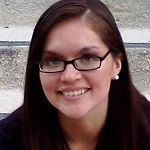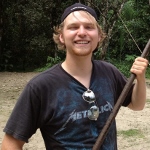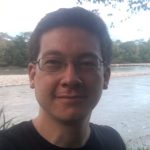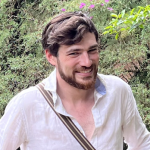Why an audiovisual corpus?
Traditional dictionaries can be cumbersome tools when attempting to understand meanings that must be expressed through sounds and gestures. Our corpus, which is a work in progress, attempts to overcome these problems by assembling live examples which embrace the full range of variability found within ideophonic performances.
Quechuarealwords is designed to help researchers of ideophones, second language learners of Quichua, and especially heritage learners of Quichua. Heritage speakers of discriminated languages are often ambivalent about those aspects of their language which are most different from the dominant prestige languages. Ideophones are one such point of difference. Researchers of ideophones have discovered that when speakers of ideophone-rich languages undergo colonialization, they often begin to feel cognitive dissonance with ideophone usage, which can often lead to a sense of shame about using their language at all. This site is designed therefore, to preserve the ideophones and distinctive speech of monolingual Quichua speakers in preparation for a time when there will be space for heritage speakers to enjoy the distinctiveness of their language.
Who are we?
This site was conceived by the Quichua Research Group led by Janis B. Nuckolls, Professor of Linguistics at Brigham Young University, where this site is hosted. Many of the site’s videos were recorded for ethnographic interviews at the Andes and Amazon Field School, near Tena Ecuador, by anthropologist Tod D. Swanson, Associate Professor of Religious Studies at Arizona State University. Our research group consists of students and visiting faculty from universities in the US, Ecuador, and Europe, who conduct original research at the Andes and Amazon Field School.An earlier version of this site was designed and constructed by Diana Sun, a graduate of BYU’s undergraduate linguistics program, with a minor in Information Technology. Her work on this project was partially funded by an undergraduate studies grant from BYU’s Office of Research and Creative Activities.
Many video clips on the site were isolated and edited out of longer narratives by Alexander Rice and Sydney Ludlow. Alex is a PhD candidate in Linguistics at the University of Alberta, Canada. Sydney is in the PhD Linguistics program at the University of Hawaii. Barrett Hamp contributed many transcriptions of Quichua recordings and as now in a PhD program in Linguistics at the University of Texas, Austin. Austin Howard, a PhD student from Florida State University has contributed a number of video recordings and ideophone clips to the site.
The most important members of our research group are our Quichua language consultants. Luisa, Elodia Cadena, Eulodia Dagua, Delicia, Pedro, David, and Belgica, among many others, have generously offered to share their insights and life stories with us. It is our hope that with this site we can convey something of their enthusiasm for communicating the nuances of their experience.
Additional Resources:
Many definitions within this corpus have been adapted from Sounds Like Life: Sound-Symbolic Grammar, Performance, and Cognition in Pastaza Quechua by Janis B. Nuckolls, Oxford University Press, 1996.
An article that seeks to understand Quichua cultural outlooks:
“Earthy concreteness and anti-hypotheticalism in Amazonian Quichua discourse” by Janis B. Nuckolls and Tod D. Swanson. In: Tipiti, Journal of the Society for the Anthropology of Lowland South America, Special Topic: Amazonian Quichua, 2014, vol. 12/1, guest edited by Norm Whitten Jr. and Michael Uzendoski.
Academic Publications resulting from Quechua Research Group Collaborations:
Janis B. Nuckolls, Tod D. Swanson, Belinda Ramirez Spencer “Demonstrative Deixis in two dialects of Amazonian Quichua” In: Quechua Expressions of Stance and Deixis, for Brill’s Studies in the Indigenous Languages of the Americas book series, Marilyn S. Manley, Antje Muntendam, editors, 2015.
Janis B. Nuckolls, Joseph A. Stanley, Roseanna Hopper, and Elizabeth Nielsen,”The systematic stretching and contracting of ideophonic phonology in Pastaza Quichua”. International Journal of American Linguistics (January 2016).
Janis B. Nuckolls, Tod Swanson, Diana Sun, Alexander Rice, and Sarah Hatton, “Lexicography in your face: the active semantics of Pastaza Quichua ideophones” Canadian Journal of Linguistics for a special issue entitled: “Structuring sensory imagery: ideophones across languages & cultures,” edited by: Solveiga Armoskaite and Päivi Koskinen, Spring/Summer, 2017.
Janis B. Nuckolls, The sensorisemantic clustering of ideophonic meaning in Pastaza Quichua. In: Ideophones and Linguistic Theories, Kimi Akita, Prashant Pardeshi (eds.)for a volume in the John Benjamins’ Iconicity in Language and Literature series (series editors: Olga Fischer and Christina Ljungberg), 2019.






